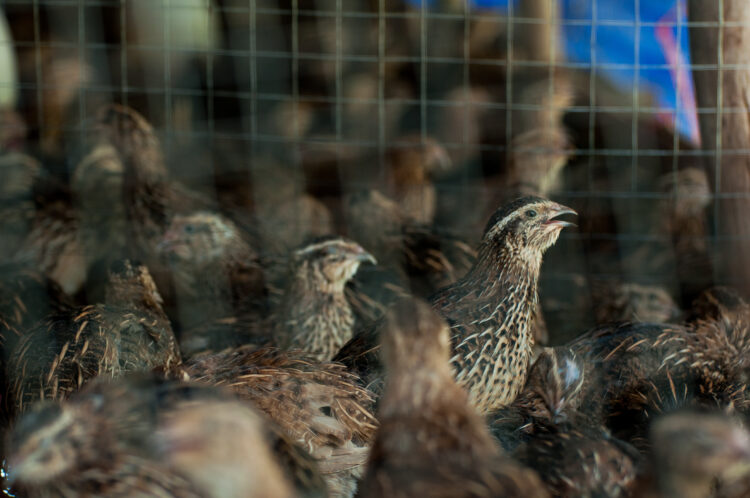Quail Farming Equipment: Must-Haves for Efficiency
Quail Farming Equipment: Must-Haves for Efficiency
Quail farming has emerged as a profitable venture for small-scale farmers due to its low investment costs, quick turnaround, and high-profit potential. To ensure success in quail farming, it’s essential to have the right equipment and infrastructure in place. In this comprehensive guide, we’ll explore the essential equipment required for efficient quail farming operations, from housing and incubation to feeding and processing.
Housing Equipment:
- Quail Coops: Quail coops are specially designed enclosures that provide shelter and protection for quails. Coops should be well-ventilated, predator-proof, and easy to clean. Consider using stackable or modular coop systems to maximize space efficiency and accommodate growing quail flocks.
- Brooder Boxes: Brooder boxes are used to provide warmth and protection for newly hatched quail chicks. These boxes are equipped with heat lamps or heating pads to maintain optimal temperature conditions for young quails during the critical early stages of development.
- Cages or Pens: Cages or pens are used to house quails in larger numbers, allowing for easy management and monitoring of the flock. Choose cages or pens with appropriate spacing to prevent overcrowding and promote air circulation. Consider using wire flooring to facilitate waste removal and reduce the risk of disease transmission.
- Nesting Boxes: Nesting boxes are essential for laying quails to lay their eggs in a clean and secure environment. Provide nesting boxes filled with clean bedding material, such as straw or wood shavings, to encourage egg-laying behavior and minimize egg breakage.
Incubation Equipment:
- Egg Incubator: An egg incubator is a vital piece of equipment for hatching quail eggs artificially. Choose a reliable and accurate incubator that maintains stable temperature and humidity levels throughout the incubation process. Consider investing in an incubator with automatic turning capabilities to ensure uniform development of the embryos.
- Candling Device: A candling device is used to inspect quail eggs for signs of fertility and embryo development during the incubation period. Candling allows farmers to identify and remove infertile or non-viable eggs, optimizing hatch rates and hatchling quality.
- Hatching Trays: Hatching trays are trays or racks used to hold quail eggs during the final stages of incubation. Choose hatching trays that provide adequate support and ventilation for newly hatched chicks to prevent suffocation and overheating.
Feeding and Watering Equipment:
- Feeders: Choose feeders specifically designed for quails, such as trough feeders or gravity-feeders, to ensure easy access to feed and minimize waste. Consider using adjustable feeders to accommodate different flock sizes and feeding requirements.
- Waterers: Provide quails with access to clean, fresh water at all times using waterers specifically designed for poultry. Choose waterers with drip-free nipples or cups to prevent spillage and contamination. Consider using automatic watering systems to ensure a continuous supply of water and reduce labor requirements.
- Feed Storage Containers: Store quail feed in airtight containers to prevent spoilage, contamination, and pest infestations. Choose durable containers that are easy to clean and maintain, and label them clearly to identify the type of feed and expiration date.
Handling and Processing Equipment:
- Egg Collection Trays: Egg collection trays are used to collect and transport quail eggs from the nesting boxes to the storage area. Choose trays with dividers or compartments to prevent eggs from rolling and cracking during handling.
- Egg Washers: Egg washers are used to clean quail eggs before storage or sale. Choose egg washers specifically designed for small-scale operations, and use gentle detergents or sanitizers to remove dirt, debris, and bacteria from the eggshells.
- Processing Tools: If processing quail meat for sale, invest in appropriate tools and equipment for slaughtering, eviscerating, and packaging. Ensure compliance with food safety regulations and hygiene standards to maintain product quality and consumer safety.
- Scales and Weighing Equipment: Scales and weighing equipment are essential for monitoring quail growth and assessing feed efficiency. Choose accurate and reliable scales to measure the weight of quails at various stages of development.
Conclusion:
Efficient quail farming requires the proper equipment and infrastructure to support the health, growth, and productivity of the flock. From housing and incubation to feeding and processing, each piece of equipment plays a vital role in ensuring the success and profitability of quail farming operations. By investing in high-quality equipment, implementing sound management practices, and prioritizing animal welfare and food safety, small-scale farmers can achieve efficiency, sustainability, and success in their quail farming ventures.
Previous Article
Quail Farming Economics: Assessing Costs and ProfitsQuail Farming
November 7, 2024


























































